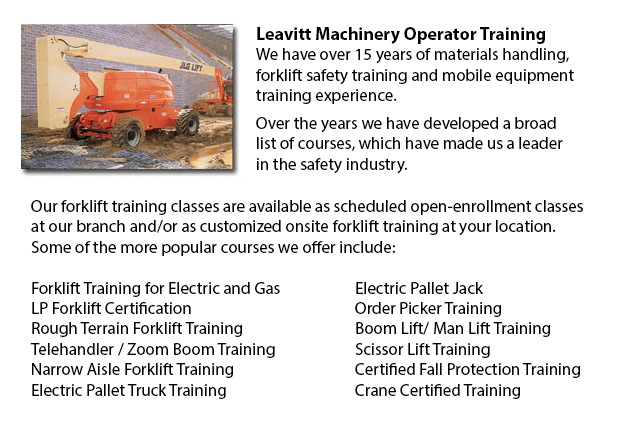
Kitchener Boom Lift Safey Training - Boom lifts are a type of elevated work platform or aerial lifting device that are commonly utilized in industry, warehousing and construction. Boom lifts can be made use of in almost whichever environment due to their versatility.
Elevated work platforms enable personnel to get into work areas which will be not reachable otherwise. There is inherent risk in the operation of these devices. Workers who operate them must be trained in the right operating methods. Accident prevention is paramount.
The safety aspects which are involved in boom lift operation are included in our Boom Lift Training Programs. The course is suitable for people who operate self-propelled boom supported elevated work platforms and self-propelled elevated work platforms. Upon successful completion of the course, participants will be issued a certificate by someone licensed to confirm completing a hands-on assessment.
To be able to help train operators in the safe utilization of elevated work platforms, industry agencies, federal and local regulators, and lift manufacturers all play a part in establishing standards and providing the necessary information. The most essential ways to avoid accidents associated to the use of elevated work platforms are as follows: conducting site assessments; inspecting machinery; and putting on safety gear.
Key safety considerations when operating Boom lifts:
Operators need to observe the minimum safe approach distance (MSAD) from power lines. Voltage can arc across the air to find an easy path to ground.
A telescopic boom should be retracted prior to lowering a work platform to be able to maintain stability as the platform nears the ground.
Boom lift workers should tie off to ensure their safety. The harness and lanyard tools have to be attached to manufacturer provided anchorage, and never to other poles or wires. Tying off may or may not be necessary in scissor lifts, that depends on particular local regulations, employer guidelines or job risks.
The maximum slope will be specified by the manufacturer. Workers should avoid working on a slope, whenever possible. When the slope exceeds recommended conditions, the lifting device should be winched or transported over the slope. A grade could be simply measured by laying a minimum 3-feet long straight board or edge on the slope. Afterward a carpenter's level could be laid on the straight edge and raising the end until it is level. The percent slope is obtained by measuring the distance to the ground (also referred to as the rise) and then dividing the rise by the length of the straight edge. Then multiply by 100.
-
Kitchener Forklift Training Schools
Kitchener Forklift Training Schools - The Advantages Of Taking One Of Our Forklift Training Schools Are you searching for work as a driver of a forklift? Our regulatory-compliant mobile equipment operator training offers instruction in types of fo... More -
Kitchener Overhead Crane Operator Training
Kitchener Overhead Crane Operator Training - Our overhead crane operator training course is designed to teach employees the basics of overhead crane/sling operation and pre-shift checks. Courses are taught by our expert trainers and consultants. Well... More -
Kitchener Crane Training School
Kitchener Crane Training School - The crane training school offers industry-relevant programs. Courses provide trainees with learning outcomes which match present industry demands. Our small class sizes combine hands-on experience and theory. Our qua... More -
Kitchener Skid Steer Ticket
Kitchener Skid Steer Ticket - The lift arms on the skid-steer loader are located at the side of the driver along with pivots behind the driver's shoulders. These features makes the skid-steer loader different as opposed to the conventional front load... More -
Kitchener Manlift Operator Certification
Kitchener Manlift Operator Certification - Our scissor platform and aerial lift training and certification empowers participants with a knowledge and general understanding of the efficient and safe use of "Power Operated Mobile Work Platforms," under... More -
Kitchener Crane Safety Training
Kitchener Crane Safety Training - Companies and crane operators have to be aware of the problems related to crane safety. Legislation provides rules for the safe operation, inspection and maintenance of lifting machines all around North America. Cran... More -
Kitchener Forklift Training Programs
Kitchener Forklift Training Programs - Are you searching for work as a forklift driver? Our regulatory-compliant mobile equipment operator training offers instruction in kinds of forklifts, pre-shift check, fuel kinds and dealing with fuels, and safe... More -
Telehandler Training in Kitchener
Telescopic handlers often known as telehandlers for short, are an extremely popular piece of heavy construction machinery. They are commonly used in the construction and agricultural industries. These equipments have extreme reaching ability and can... More

Forklift Certification Kitchener
TOLL FREE: 1-888-254-6157
Kitchener, Ontario
forkliftcertificationkitchener.com
Email Us
About Us


